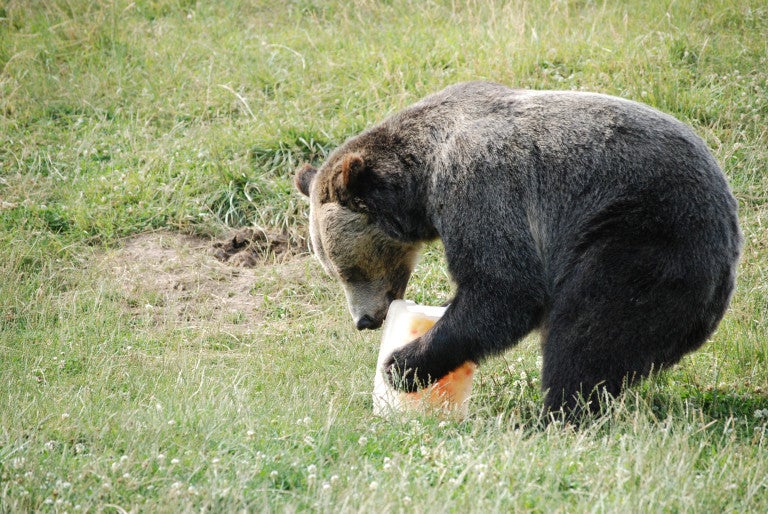Feeding bears too much meat is killing them, study claims
The study shows that captive bears will choose foods that imitate the diets of wild bears
Your support helps us to tell the story
From reproductive rights to climate change to Big Tech, The Independent is on the ground when the story is developing. Whether it's investigating the financials of Elon Musk's pro-Trump PAC or producing our latest documentary, 'The A Word', which shines a light on the American women fighting for reproductive rights, we know how important it is to parse out the facts from the messaging.
At such a critical moment in US history, we need reporters on the ground. Your donation allows us to keep sending journalists to speak to both sides of the story.
The Independent is trusted by Americans across the entire political spectrum. And unlike many other quality news outlets, we choose not to lock Americans out of our reporting and analysis with paywalls. We believe quality journalism should be available to everyone, paid for by those who can afford it.
Your support makes all the difference.Giant pandas and sloth bears should have varied diets like humans and are being fed too much meat, researchers claim.
A new study in Scientific Reports claims to add evidence to the theory that bears are omnivores like humans and need a lot less protein than they are typically fed in zoos.
Charles Robbins, a Washington State University wildlife biology professor and lead author of the study, said: “Bears are not carnivores in the strictest sense like a cat where they consume a high-protein diet.
“In zoos forever, whether it’s polar bears, brown bears or sloth bears, the recommendation has been to feed them as if they are high-protein carnivores. When you do that, you kill them slowly.”
In separate experiments, researchers presented captive giant pandas and sloth bears at different US zoos with unlimited food of different types to see their preferences and then recorded the nutritional profiles of their choices.
The team found that giant pandas preferred the carbohydrate-rich bamboo culm found in woody stalks of bamboo over the more protein-rich leaves. At some points, they consumed culm almost exclusively – for instance, 98% of the time in the month of March. The researchers also analysed data from five Chinese zoos which had giant pandas that had successfully reproduced and found again a high-carbohydrate low-protein diet.
It’s also vastly different from the high-carbohydrate diet they are usually fed in captivity. Sloth bears, which are native to India, typically live only around 17 years in US zoos, almost 20 years less than the maximum lifespan achievable in human care. Their most frequent cause of death is liver cancer.
The study, along with previous ones, also shows that when captive bears are given dietary options, they will choose foods that imitate the diets of wild bears.

“There’s certainly this long-standing idea that humans with PhD.s know a lot more than a sloth bear or a brown bear,” said Robbins.
“All of these bears started evolving about 50 million years ago, and in terms of this aspect of their diet, they know more about it than we do.
“We’re one of the first to be willing to ask the bears: What do you want to eat? What makes you feel well?”
Robbins, the founder of the WSU Bear Center, the only research institution in the US with a captive population of grizzlies, has studied bear nutrition for decades. He and his graduate students first started investigating their misbalanced diets during a study in Alaska, watching grizzlies eat salmon.
At the time, the researchers had theorized that the notoriously voracious bears would gorge on salmon, sleep, get up and eat more salmon.
Instead, they saw the bears would eat salmon, but then wander off and spend hours finding and eating small berries. Seeing that, Robbins’ laboratory started investigating diet with the grizzly bears housed at the Bear Center and found they gained the most weight when fed a combination of protein, fats, and carbohydrates.
“It just opens up so many more food resources than just being a straight, high protein carnivore,” Robbins said.



Join our commenting forum
Join thought-provoking conversations, follow other Independent readers and see their replies
Comments